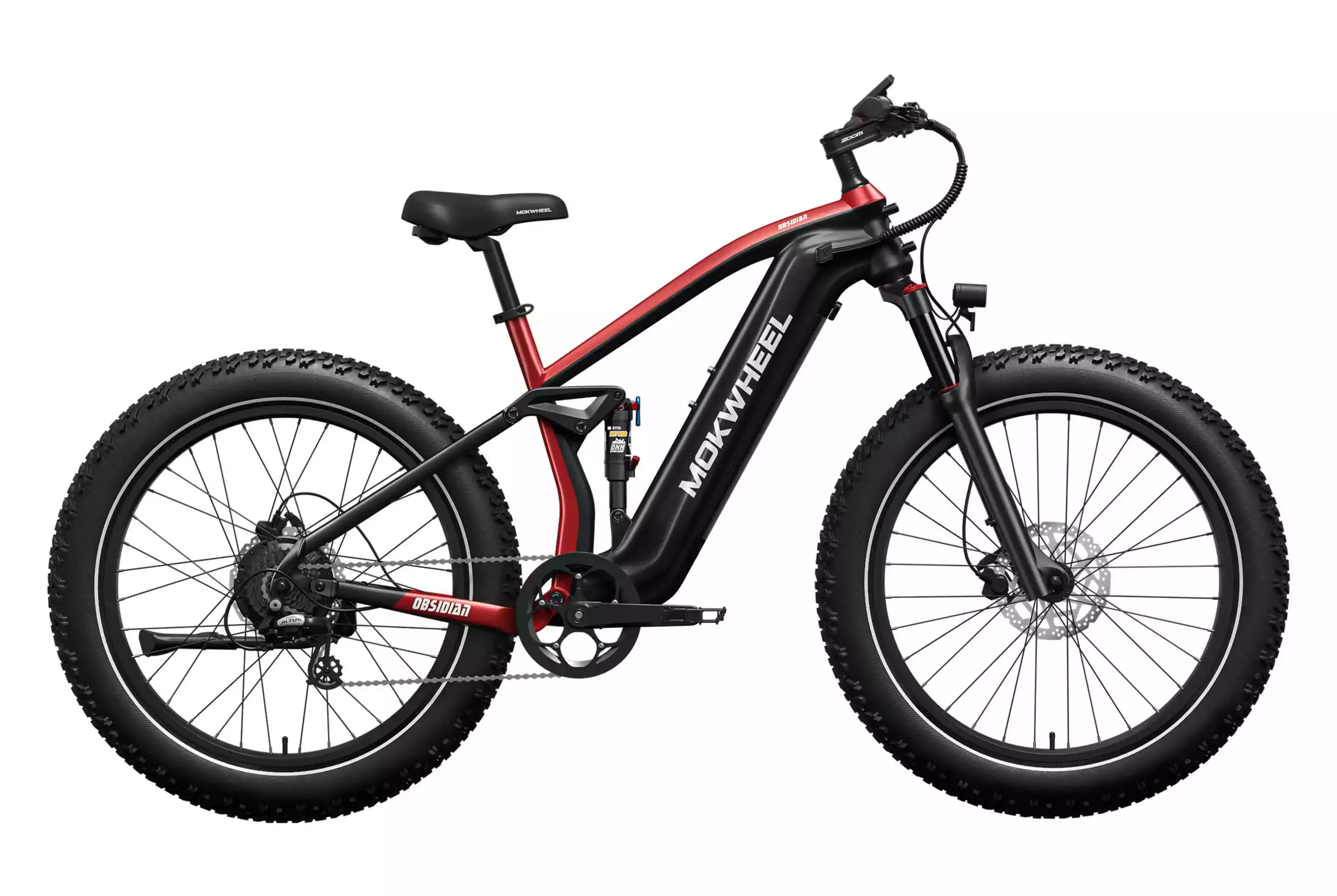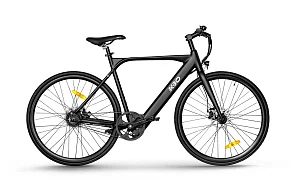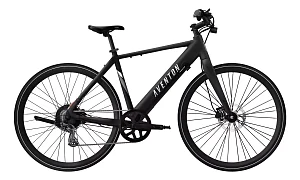Ever tried biking up a steep hill and felt like your legs might give out? That’s where the right electric bike makes all the difference. Whether you're cruising through rolling countryside or facing daily uphill commutes, choosing the best e-bike for hilly terrain is key to a smoother, stronger ride.
Hilly areas put your bike—and your stamina—to the test. Think long, steep grades, sudden elevation changes, and battery-draining climbs. Not all e-bikes are built to handle that kind of pressure, which is why it's crucial to look for models designed specifically to conquer hills.
So, what makes an e-bike hill-worthy? It comes down to three big factors:
- High torque: This is the power that helps you climb without stalling. Look for motors rated at 70Nm or more.
- Mid-drive motors: Unlike hub motors, these are mounted in the center and work with your gears—ideal for inclines.
- Large battery capacity: Climbing takes more energy, so you'll want a battery that can go the distance (think 500Wh and up).
Pro Tip: More torque doesn’t always mean a faster bike—it means a stronger one, especially when heading uphill.
In this guide, you’ll learn exactly what to look for in an e-bike built for elevation, plus our top picks across different categories and budgets. Whether you’re a commuter, mountain adventurer, or weekend explorer, we’ll help you find the perfect match.
Ready to level up your ride? Let’s climb.
Key Features to Look for in a Hill-Climbing E-Bike
Conquering steep terrain isn’t just about brute force—it’s about choosing the right combination of power, battery life, and build. If you want to ride smarter (not harder), these are the essential features to keep in mind when shopping for the best e-bike for hills.
2.1. High Torque Output = More Climbing Power
Torque is what helps your e-bike push uphill without stalling or straining. It’s measured in Newton-meters (Nm), and higher numbers mean more hill-climbing muscle.
- Look for motors rated at 70Nm or higher for steep or sustained climbs.
- Bosch Performance Line CX: Up to 85Nm—excellent for mountain terrain.
- Shimano EP8: Delivers a smooth 85Nm with a natural feel.
- Bafang M600: Offers 120Nm for serious punch (great for off-roaders).
Pro Tip: If your daily ride includes steep grades, torque is more important than top speed.
2.2. Mid-Drive vs. Hub Motor: Know the Difference
Your e-bike’s motor placement plays a huge role in climbing ability.
- Mid-drive motors sit in the center and power the crank directly. This design allows the motor to work with your bike’s gears, giving you better performance on hills.
- Hub motors, found in the wheel, are cheaper but less efficient on inclines.
Why mid-drive is better for hills:
- Better torque transfer through your gear system
- Balanced weight improves traction and control
- More natural ride feel
Quick Comparison:
| Feature | Mid-Drive Motor | Hub Motor |
|---|---|---|
| Hill Climbing Power | ⭐⭐⭐⭐⭐ | ⭐⭐ |
| Price | $$$ | $ |
| Weight Distribution | Centered & Balanced | Rear-heavy |
2.3. Long-Lasting Battery Life for Steep Rides
Hills eat up battery faster than flat roads. That’s why battery capacity is key.
- Look for 500Wh or more if you’re riding in consistently hilly areas.
- Steep climbs can cut your range by 30–50%, especially in higher assist levels.
- Pairing the battery with an efficient motor (like Bosch or Shimano) can stretch your range.
Estimated Range:
- Flat Terrain: ~50–70 miles on a 500Wh battery
- Hilly Terrain: ~25–40 miles (depending on assist level and rider weight)
Pro Tip: Avoid letting your battery dip below 20% on big rides—it can stress the system and cut performance.
2.4. Gear Range and Drivetrain Quality Matter
Think of your drivetrain as your e-bike’s transmission. When you're climbing, a wide gear range helps your legs and motor work together efficiently.
- Choose bikes with 10–12 speed cassettes for maximum versatility.
- Brands like Shimano Deore, SRAM Eagle, or MicroSHIFT Advent X offer reliable performance for hill-heavy routes.
Key Benefits:
- Easier pedaling on steep inclines
- Better energy efficiency for both rider and battery
- Smoother gear shifts under load
2.5. Suspension & Braking for Confident Downhills
What goes up must come down—sometimes fast. That’s where good suspension and brakes come in.
- Front suspension (hardtail) is great for moderate trails and city hills.
- Full suspension (dual) is better for rugged off-road descents and comfort on bumpy terrain.
- Hydraulic disc brakes give you strong, consistent stopping power in all weather.
Look for:
- At least 100mm travel in front suspension
- Shimano or Tektro hydraulic brakes with large rotors (180mm+)
From high-torque motors to efficient drivetrains, every part of your e-bike should work in sync to power you uphill and keep you safe on the way down. Up next, we’ll break down the best electric bikes for hilly terrain by type and budget—so you can find your perfect match without the guesswork.
Ready to find your hill-climbing hero? Keep reading.
Best E-Bikes for Hilly Terrain (By Category)
From high-powered mountain beasts to budget-friendly commuters, the best e-bikes for hilly terrain come in all shapes and sizes. Below, you’ll find top picks across categories—each one tested and recommended for steep climbs, extended range, and total ride confidence.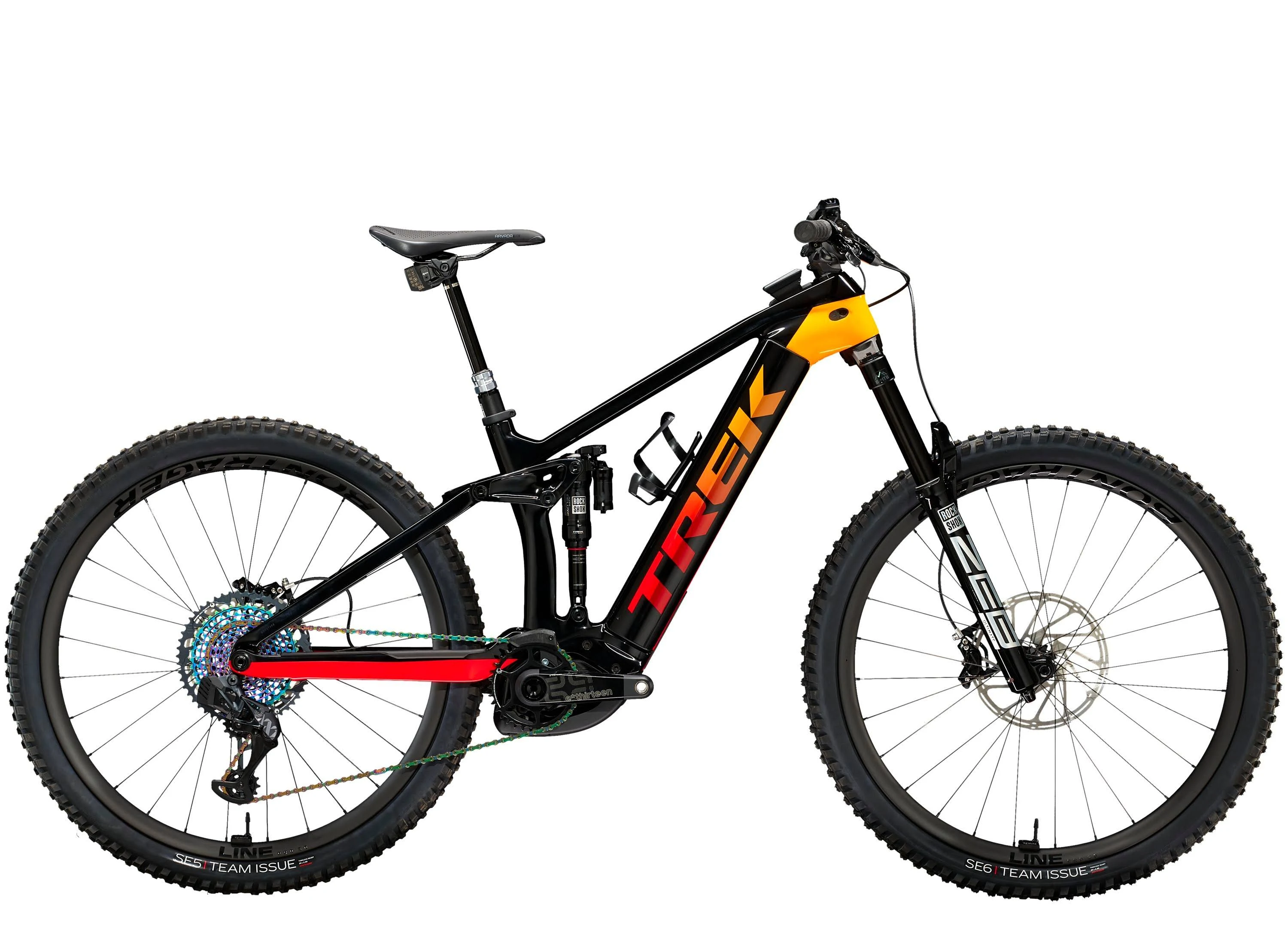
3.1. Best Overall Climbing E-Bike
Trek Rail 9.9 XX1 AXS Gen 3
This full-suspension e-MTB blends premium trail performance with elite hill-climbing ability. With Bosch’s Performance Line CX motor, it delivers a smooth yet powerful climb, ideal for technical ascents and endurance rides.
| Feature | Details |
|---|---|
| Motor | Bosch Performance Line CX (mid-drive) |
| Torque | 85Nm |
| Battery | Bosch PowerTube 750Wh |
| Top Features | 160mm RockShox suspension, SRAM wireless shifting, super-adjustable frame |
| Price Range | $13,499 |
| Best For | Riders seeking all-day mountain power and top-tier parts |
Why it wins: It’s an all-around monster—refined, responsive, and built for elevation.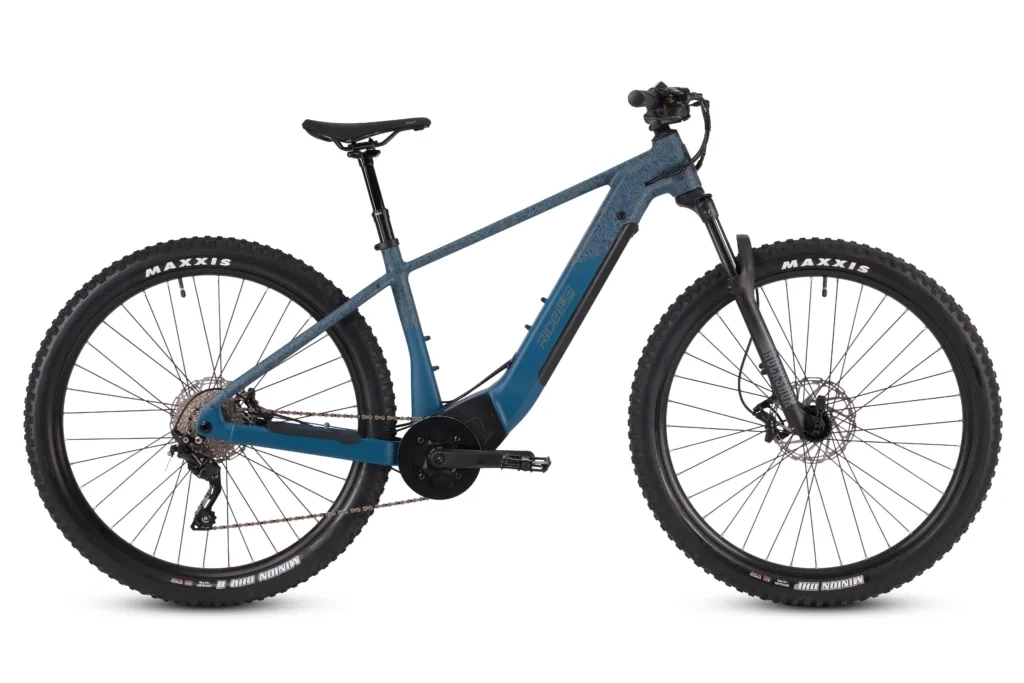
3.2. Best Mid-Drive E-Bike for Steep Hills
Rize RX Pro
For those who want sheer torque dominance, the Rize RX Pro hits hard. This beast sports a 160Nm Bafang mid-drive, making it one of the most powerful e-bikes on the market.
| Feature | Details |
|---|---|
| Motor | Bafang M620 mid-drive (1000W) |
| Torque | 160Nm |
| Battery | 52V 15Ah or 20Ah options |
| Top Features | Fat tires, advanced torque sensor, 9-speed drivetrain |
| Price Range | $2,799–$3,399 |
| Best For | Steepest hills, off-road power, heavy-duty hauling |
Pro Tip: This bike borders on Class 3/4 specs—check your local e-bike laws before ripping through city limits.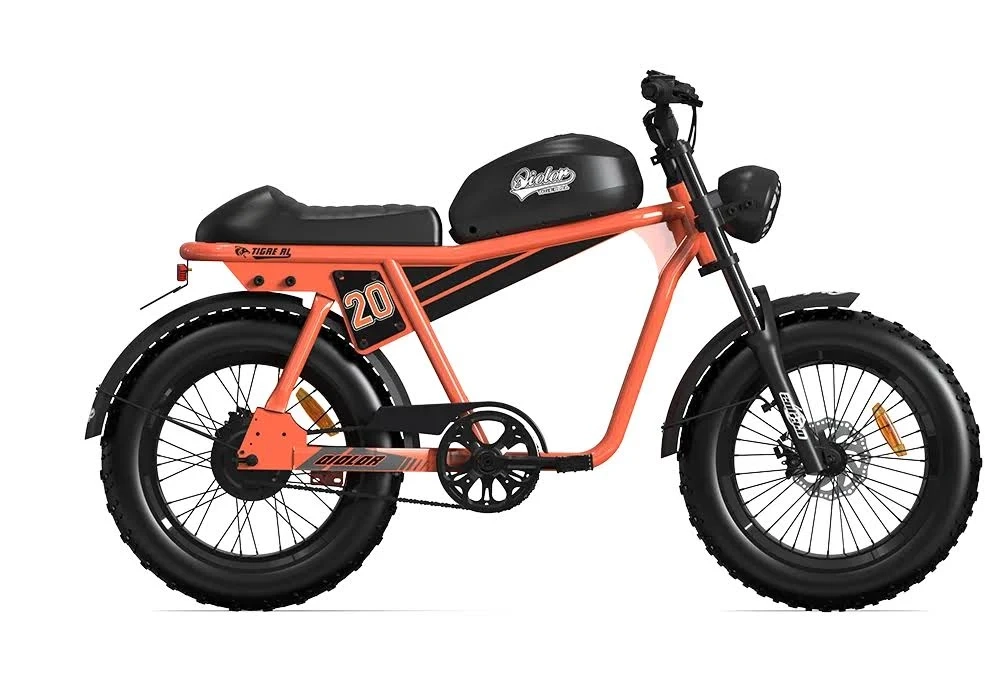
3.3. Best Budget E-Bike for Hilly Areas
Qiolor Tiger RL
Don't be fooled by the price—this retro-style e-bike has real hill-climbing chops, with 85Nm of torque and a smooth power band for urban inclines.
| Feature | Details |
|---|---|
| Motor | Rear hub motor (750W, 1100W peak) |
| Torque | 85Nm |
| Battery | 48V 13Ah (upgradeable) |
| Top Features | Fat tires, hydraulic brakes, smart lock, 60-mile range |
| Price Range | $1,399 |
| Best For | Budget riders, city hills, stylish commutes |
Other Strong Budget Picks:
- Aventon Aventure.2 – Torque sensor, 750W hub motor, fat tires (~$1,799)
- Ride1Up Vorsa – Compact, efficient hill climber with 720Wh battery (~$1,395)

3.4. Best Full-Suspension E-MTB for Mountain Terrain
Mokwheel Obsidian Series
Designed for wild terrain and long-distance adventures, the Obsidian blends power with tech-forward features—solar charging, big suspension, and serious off-road potential.
| Feature | Details |
|---|---|
| Motor | High-power mid-drive (estimated 1300W peak) |
| Torque | Not specified (high-performing) |
| Battery | 60–80 mile range; solar charging capable |
| Top Features | Full suspension, fat tires, adventure-ready geometry |
| Price Range | $2,199.99 |
| Best For | Backcountry rides, trail hunting, all-terrain climbs |
Bonus Option: Orbea Wild – Bosch CX motor, 170mm travel, and competition-ready geometry.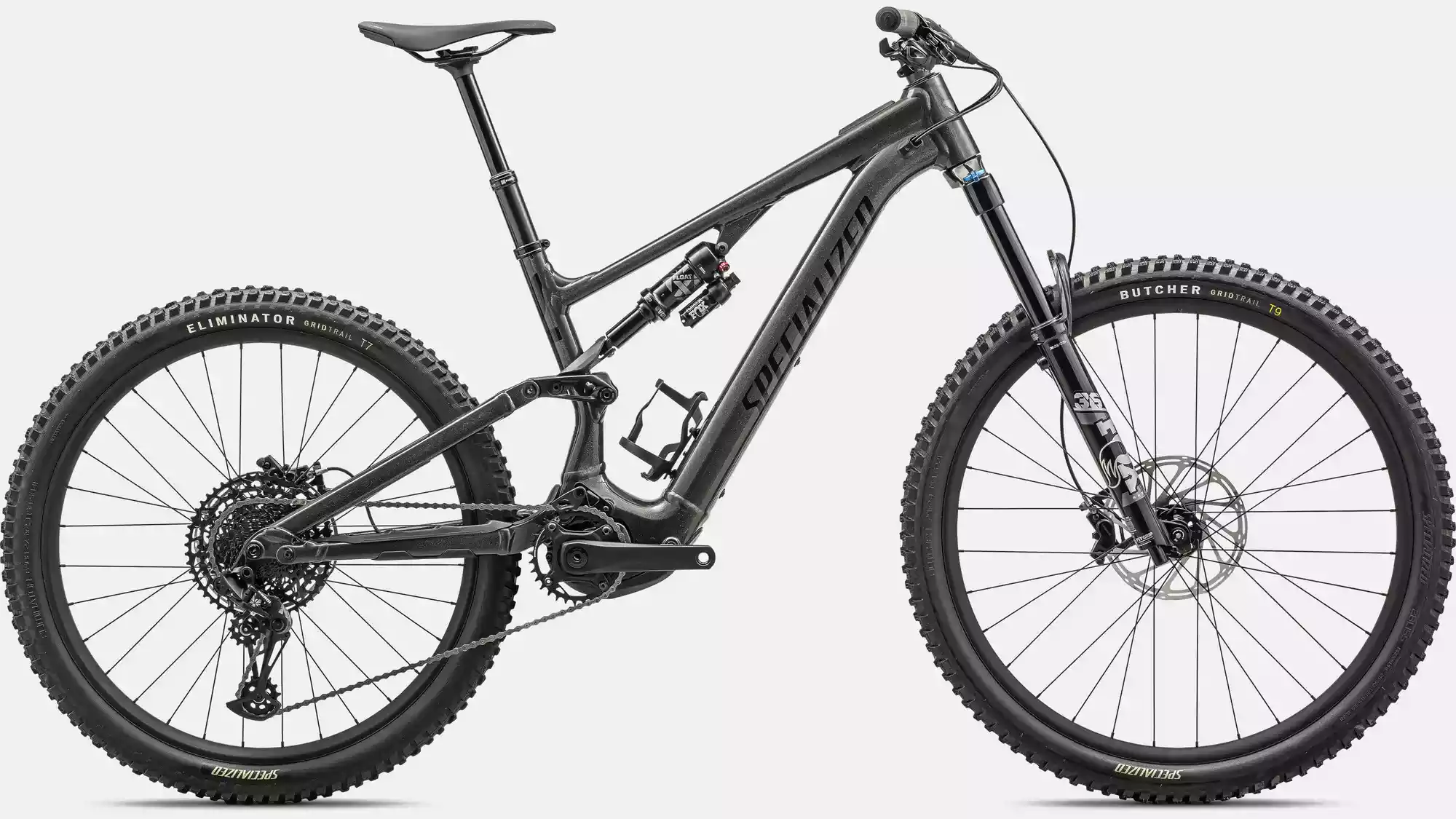
3.5. Best Lightweight E-Bike with Climbing Power
Specialized Turbo Levo SL
This sleek, featherweight e-MTB is perfect for riders who want nimble handling with just the right amount of boost. At 50Nm, it won’t win torque contests—but it climbs surprisingly well on moderate hills.
| Feature | Details |
|---|---|
| Motor | Specialized SL 1.2 mid-drive |
| Torque | 50Nm |
| Battery | 320Wh (extendable to 480Wh) |
| Top Features | 17kg frame, agile geometry, smooth power curve |
| Price Range | ~$8,000+ |
| Best For | Lighter riders, trail agility, long mixed terrain days |
Quick Reference Comparison
| Category | Best Pick | Motor Type | Torque | Battery | Price | Ideal Use |
|---|---|---|---|---|---|---|
| Best Overall Climber | Trek Rail 9.9 | Mid-drive | 85Nm | 750Wh | $13,499 | High-end climbing, all-day riding |
| Best Mid-Drive for Steep Hills | Rize RX Pro | Mid-drive | 160Nm | 52V 15–20Ah | $2,799+ | Power-heavy climbs, off-road |
| Best Budget for Hilly Areas | Qiolor Tiger RL | Hub | 85Nm | 48V 13Ah | $1,399 | Urban hill climbs, budget-friendly |
| Best Full-Suspension E-MTB | Mokwheel Obsidian Series | Mid-drive* | High | 60–80mi | $2,199.99 | Mountain trails, off-grid adventures |
| Best Lightweight Climber | Turbo Levo SL | Mid-drive | 50Nm | 320–480Wh | $8,000+ | Lightweight trail riders, agility |
These bikes prove you don’t have to suffer uphill. Whether you're scaling rugged trails, taking on long mountain commutes, or tackling a few steep blocks in your neighborhood, there’s an electric bike built for that.
Next Up: Want to make the most of your hilly ride? Let’s go over some pro tips for riding smart, staying safe, and saving battery power.
Tips for Riding an E-Bike on Hilly Terrain
Steep climbs don’t have to drain your battery—or your energy. With a few smart techniques, you can make every hill feel a little flatter and keep your ride smooth from bottom to top. Here’s how to ride more efficiently and get the most out of your hill-climbing electric bike.
Use Pedal-Assist Strategically
Pedal-assist is your best friend on climbs—but only when used right. Cranking it to the max from the start can burn through your battery faster than you think.
- Use lower assist levels on gentler grades to save power.
- Save Turbo or Boost mode for the steepest sections.
- Try riding in Eco or Tour mode to stretch your range, especially on long climbs.
Pro Tip: Think of pedal-assist like gears in a car—use more only when you really need it.
Shift Gears Before the Climb Starts
Unlike cars, e-bikes don’t love sudden gear changes under stress. Shifting too late—midway up a hill—can strain your chain and motor.
- Downshift early as you approach a hill so you’re ready to spin efficiently.
- Use lower gears to reduce resistance and help the motor assist you more smoothly.
- Listen for grinding or skipping—those are signs you waited too long to shift.
Plan Your Route with Elevation in Mind
Not all miles are created equal. A short ride with big climbs can be more demanding than a flat cruise.
- Use apps like Komoot, Ride with GPS, or Google Maps (bike mode) to preview elevation.
- Look for alternate routes that offer gentler climbs or switchbacks for longer ascents.
- Check the weather too—headwinds + hills = major battery drain.
Keep Your Battery Above 20%
Running your e-bike battery down too far can reduce performance—and may shorten the life of your battery over time.
- Start hill-heavy rides with at least 60–80% charge.
- Avoid pushing the battery below 20%, especially on multi-climb routes.
- Carry a spare charger or plan pit stops if you're going long.
Pro Tip: If your e-bike allows it, bring a range extender battery for peace of mind on big elevation rides.
With these simple habits, you’ll climb smarter, protect your gear, and ride longer with confidence. Whether you're scaling steep streets or winding up forest trails, the right approach makes every ascent more enjoyable.
Coming up next: We’ll tackle the most common questions about e-bikes and hills—so you can ride prepared and informed.
FAQs: E-Bikes and Hilly Terrain
Wondering how e-bikes really perform on hills? You’re not alone. These are some of the most common questions riders ask before taking on elevation. Let’s break them down so you can climb with confidence.
Can Hub Motors Handle Hills?
Yes—but with limitations.
Hub motors, especially rear hub types, can manage moderate hills, especially if they’re rated 750W or higher and paired with a torque sensor. But for long, steep climbs, a mid-drive motor is a better choice.
- Hub motors don’t use your bike’s gears, so they can struggle on steep terrain.
- Mid-drives work with your gearing to maintain momentum and climb more efficiently.
Pro Tip: For city riding with occasional hills, a strong hub motor will do the trick. For serious inclines or trail use, go mid-drive.
How Long Will My Battery Last on a Hilly Ride?
It depends on your battery size, terrain, assist level, and rider weight—but expect shorter range on hills.
- A 500Wh battery might get 25–40 miles in hilly conditions vs. 50–70 on flat ground.
- Using high assist modes or climbing with heavy loads will drain it faster.
- Motor efficiency also matters—Bosch and Shimano systems tend to stretch battery life better on climbs.
To extend your range:
- Use lower assist levels when possible.
- Shift early to reduce strain.
- Stay above 20% battery to keep performance consistent.
Do I Need Full Suspension for Climbing?
Not necessarily. Suspension helps more on the way down than on the way up.
- Front suspension (hardtail) is usually enough for city hills and basic trails.
- Full suspension (both front and rear) is ideal for off-road climbs, rocky terrain, or comfort on longer rides.
If you’re riding technical mountain trails, full suspension is a must. But if you’re sticking to pavement or light gravel, save the money and weight with a hardtail.
What’s More Important: Torque or Wattage?
Torque. For climbing, it’s torque—not just watts—that gets you up the hill.
- Torque is the turning force that helps move your bike uphill. It’s measured in Nm.
- Wattage shows how much power your motor can output, but high watts with low torque can still feel sluggish on climbs.
Look for motors rated at 70Nm or higher for serious hill work. Brands like Bosch, Bafang, and Shimano EP8 offer great climbing torque.
Choosing the right motor, battery, and setup makes all the difference in how your e-bike handles hills. Whether you’re still comparing options or ready to ride, the answers above should help you move forward with confidence.
Still climbing through questions? Check out our full e-bike buying guide or head straight to our top picks for hilly terrain.
6. Conclusion: Ride Higher with the Right E-Bike
When it comes to steep streets or mountainous trails, not all e-bikes are created equal. If you’re riding in hilly terrain, choosing the right combination of motor torque, battery capacity, and drivetrain is essential for a smooth, powerful climb.
A high-torque, mid-drive motor will give you the grunt you need on steep grades. A large, efficient battery keeps you moving without range anxiety. And quality components—from gears to brakes—make sure every ride is not just doable, but fun.
Pro Tip: Always test ride your e-bike on actual hills—online specs don’t always tell the full story.
Whether you’re commuting across rolling roads or heading deep into the mountains, the best e-bikes for hills turn every uphill challenge into an opportunity to ride farther, faster, and more confidently.
Ready to power up your ride? Explore our full e-bike buying guide or check out the latest 2025 reviews for top-rated climbing e-bikes. Your next great ride starts at the top.
7. Additional Resources for Hilly E-Bike Riders
Want to dive deeper into finding the perfect e-bike for hills? Whether you're comparing motors or mapping your next climb, these tools and guides will help you ride smarter and go further.
Torque Comparison Charts
Not sure how 85Nm stacks up to 60Nm? These visual guides make it easy to compare motor torque across brands like Bosch, Shimano, and Bafang.
- E-Bike Torque Comparison Chart (2025)
- Mid-Drive Motor Torque Ratings Explained
Battery Range Calculators
Estimate how far your e-bike can go on hilly terrain based on your weight, assist level, and elevation gain.
- Bosch eBike Range Calculator
- Specialized Turbo Range Tool
Pro Tip: Always add 10–15% buffer when riding routes with major elevation gains.
Local Trail & Commute Route Guides
Discover hill-friendly routes and test climbs in your area using trail-focused maps or e-bike commute planners.
- Trailforks – E-MTB Trails
- Komoot – E-Bike Climbing Routes
- Ride with GPS – Elevation Maps
Maintenance Tips for Hill Riders
Steep terrain puts more strain on your drivetrain, brakes, and battery. Keep your gear in top shape with these maintenance guides:
- How to Care for Your E-Bike Motor on Hills
- E-Bike Brake & Gear Maintenance
- Battery Health for Long Climbs
These extra tools can help you choose smarter, plan better, and keep your ride performing its best. Whether you're climbing daily or gearing up for a weekend adventure, a well-equipped rider is a confident one.
Still exploring? Head back to our top picks or check out our full 2025 e-bike buying guide for hilly terrain.

